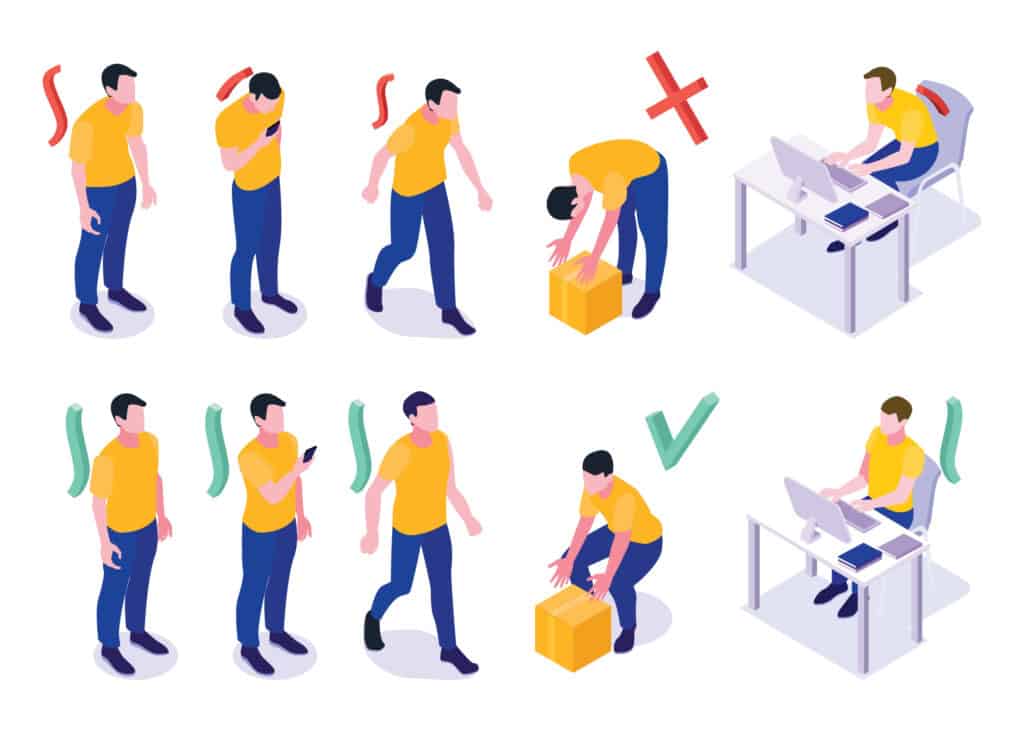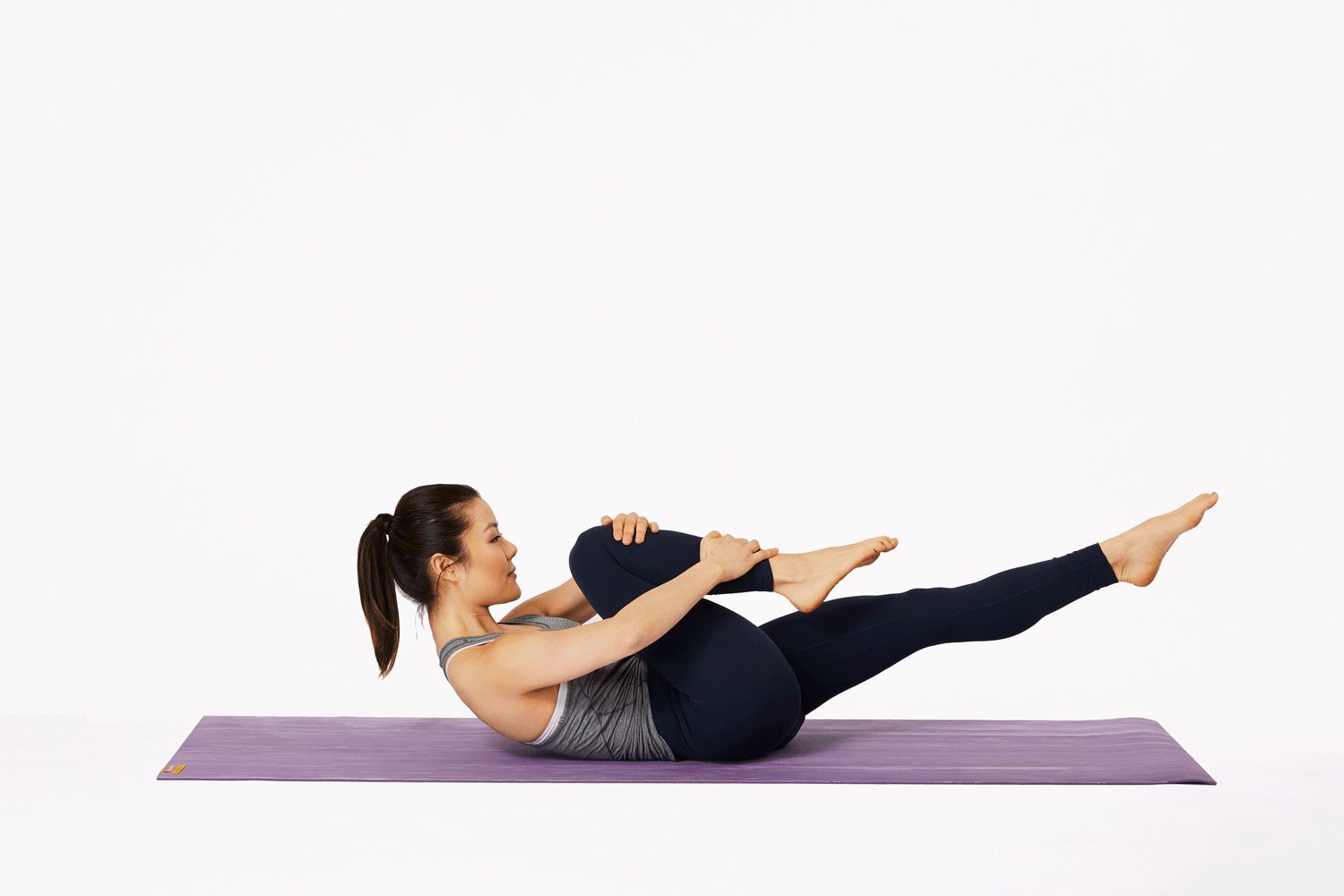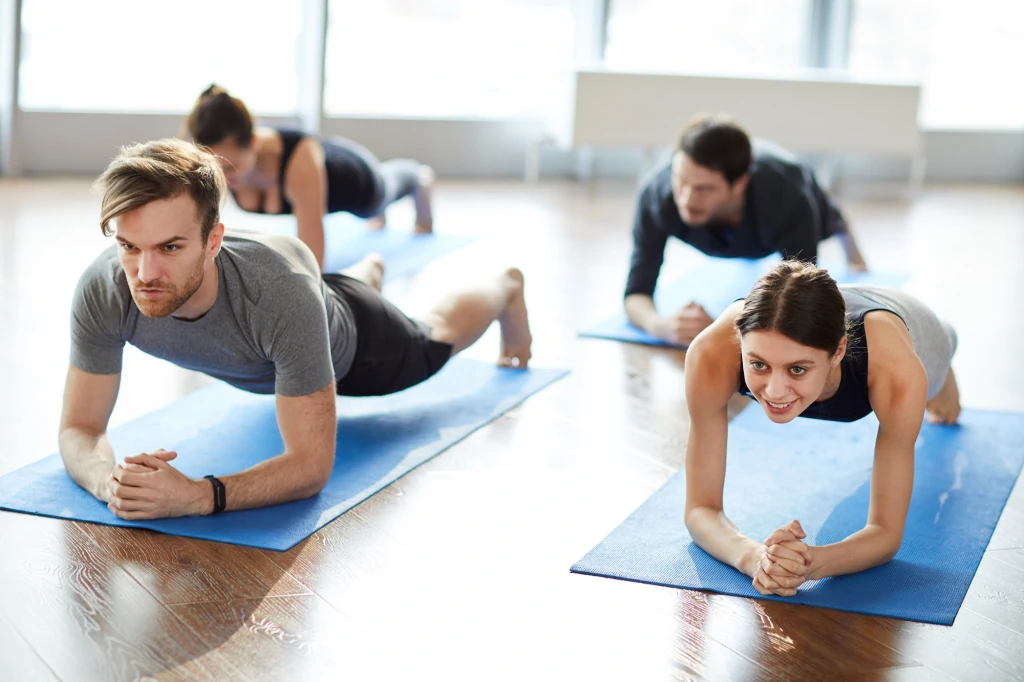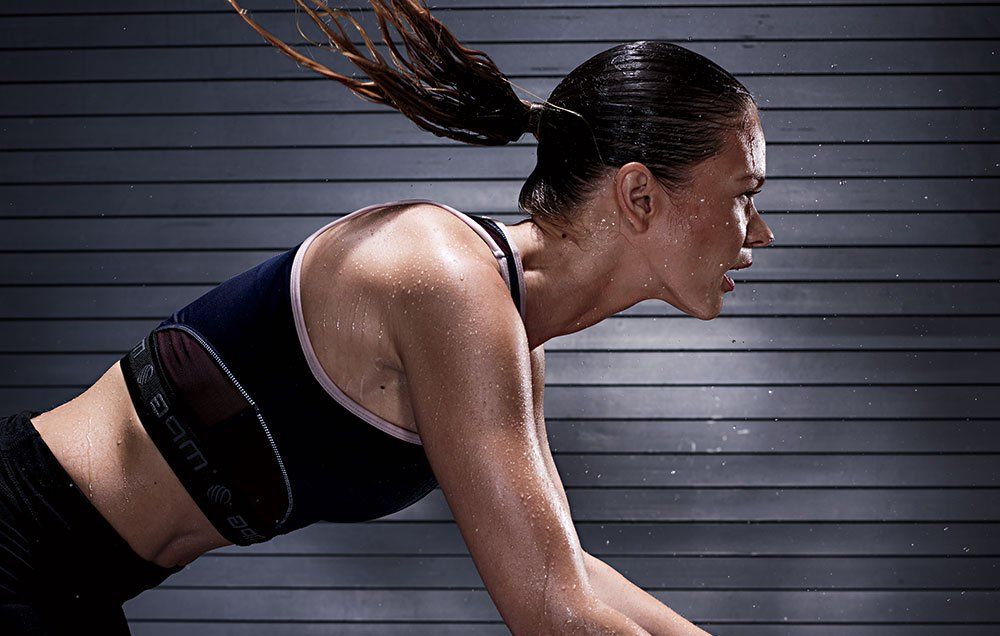Pilates has become a wildly popular workout trend, providing countless devotees with a lean physique along with mental clarity. However, several persistent myths and misunderstandings about Pilates still prevail. To separate fact from fiction, let’s thoroughly debunk the 5 most common Pilates myths circulating today.
With its emphasis on strengthening the core, Pilates seems deceptively simple on the surface. Yet there are many lingering misconceptions about what Pilates truly requires and delivers. By gaining clarity on what Pilates entails – and doesn’t – you can determine if it’s the right workout for your fitness goals and lifestyle.
Myth #1: Pilates Requires No Instruction or Guidance
One of the biggest Pilates myths is that it requires minimal expertise or instruction from a qualified trainer. After all, it’s just a series of basic floor exercises – how hard can it be to pick up? The reality is that properly practicing Pilates relies heavily on technique, precision, control, proper spinal alignment, targeted muscle engagement, and coordinated breath – mastering all these nuances takes expert guidance.

Attempting Pilates without skilled instruction frequently leads students to use poor form, reinforce bad postural habits, overuse certain muscle groups, and execute movements with improper alignment – often without realizing it. These mistakes risk imbalance, strain, and even injury over time. The many intricate details that make Pilates effective and safe when done correctly are nearly impossible for beginners to self-teach.
Working closely with a comprehensively certified Pilates instructor ensures you build a strong foundation by learning proper form and technique from the start. An experienced eye watches for subtle issues like shoulder positioning or neck alignment that can throw things off. Don’t fall into the myth of trying to figure Pilates out alone through books or videos. Invest in private or group lessons with a qualified Pilates teacher to progress safely.
Nuances an Instructor Corrects For
Here are some of the many technical skills that require troubleshooting and adjustments from an expert instructor:
- Maintaining neutral pelvic positioning and spinal alignment
- Even weight distribution through the feet to avoid imbalances
- Shoulder girdle stabilization and opening of the chest
- Proper neck alignment and minimizing strain
- Rib cage closure and transverse abdominis activation
- Maintaining scapular positioning when moving the arms
- Not allowing the low back to overarching during backbends
- Relaxing facial muscles and preventing gripping in the jaw
Consequences of Attempting Self-Taught Pilates
Those who skip instructor guidance when starting Pilates frequently learn the hard way. Without informed corrections, it’s easy to:
- Reinforce poor posture and muscle imbalance that worsen over time
- Attempt overly advanced exercises without the proper progressions, risking injury
- Perform exercises out of alignment which strains joints like the neck and lower back
- Execute motions hastily and without control, negating effectiveness
- Miss out on tailored programming for issues like injuries or special needs
Don’t undermine your potential results by believing the myth that Pilates instruction is optional or easy to DIY. Enlist an experienced instructor right off the bat.
Myth #2: Pilates Offers Limited Health and Fitness Benefits
Another common misconception is that Pilates provides only basic or superficial benefits like added flexibility or generalized toning at best. This myth wholly undersells the immense physical and mental health improvements that can be achieved through regular Pilates practice.
While increased flexibility, stronger core muscles, and lean muscle tone are par for the course, the benefits of Pilates run far deeper. In addition to these aesthetic changes, Pilates conditions the whole body and mind in key ways:
Physical Benefits
- Improved Posture: Pilates corrects poor posture by strengthening the core and shoulder girdle muscles that support proper spinal alignment and placement. Standing taller with fixed shoulders and a retracted scapula greatly improves appearance and confidence.
- Increased Joint Health: Building balanced strength and flexibility around the joints provides dynamic stabilization. This decreases wear and tear on joints and helps prevent and treat many orthopedic conditions.
- Greater Stability and Balance: The proprioceptive system is honed through challenging balancing and coordination required in Pilates movements. This reduces the risk of falls and improves everyday motor control.
- Cardiovascular Health: Certain Pilates variations including jump board routines significantly raise heart rate for sustained cardio intervals that boost cardiovascular stamina.
- Rehabilitation: Under proper guidance, Pilates is used to safely rehabilitate injuries, facilitate post-op recovery, and address chronic pain through stabilized movements.
Mental and Emotional Benefits
- Reduced Stress and Anxiety: The meditative breathwork combined with intense mental concentration elicits a relaxation response that calms the nervous system and relieves stress. Endorphins are increased while cortisol drops.
- Greater Mind-Body Connection: The constant emphasis on precision and control fosters greater awareness of subtle body motions and activates under-utilized muscle groups in a new way.
- Improved Mental Focus: The simultaneous physical and mental exertion trains concentration, discipline, and determination that spills over into everyday life.
- Confidence Building: Seeing aesthetic improvements coupled with mastering progressively challenging skills builds self-efficacy and emotional empowerment.
The myriad physical and mental benefits from regular Pilates practice make it far more than just increased limb flexibility. Tap into Pilates’ immense potential to condition your whole body and mind.
Myth #3: Performing Pilates Requires Specialized Apparatus and Equipment
Another common misconception is that to properly perform Pilates and achieve results, specialized apparatus and equipment like reformers, Cadillacs, and Wunda chairs are necessary. Many believe these machines are mandatory for effectively working the proper muscle groups.
In reality, when taught correctly, Pilates can be done very successfully to build core strength and body awareness using just your own body weight and gravity. No special machinery or contraptions are required to see tangible benefits. While Pilates equipment like reformers do provide adjustable spring resistance and assist with more advanced progressions, all you truly need to start is a soft mat.

Accessible Beginner Mat Exercises
The fundamental mat Pilates repertoire includes effective core-focused exercises easily done at home:
- The Hundred: Raise legs, pump arms, pulse breathing
- Roll Up/Roll Down: Sequentially roll the spine up/down
- Single and Double Leg Stretches: Alternating leg extensions
- Leg Circles: Circle legs around in controlled motions
- Criss Cross: Rotate torso to opposite leg/arm
- Plank Series: Front, side, and rear planks and variations
- Scissors: Cross and open legs in sweeping motions
These and other Pilates mat exercises strengthen abdominals, hips, shoulders, and back with no props needed. While portable equipment like magic circles, resistance bands, stability balls, etc. can provide extra challenge, a mat alone suffices. Don’t let the equipment myth dissuade you from starting an effective at-home mat Pilates routine. Use your own body weight to build core stability and muscular endurance from day 1.
Myth #4: Pilates Is Only For Women
There is a persistent stigma that Pilates is exclusively designed for women’s bodies and fitness goals related to weight loss, flexibility, and slenderizing. The truth is Pilates provides invaluable conditioning benefits for bodies of all shapes and sizes – including men’s.
While women may gravitate toward Pilates for sculpting and elongating benefits, Pilates is extremely advantageous for men as well. The core power, control, spatial awareness, coordination, and mind-body connection developed through Pilates translates directly into improved athletic performance across all sports and activities. And the balanced lean muscle development achieved through full-body conditioning is ideal for achieving an athletic, functional physique without undesirable bulk.

The stigma that real men don’t do Pilates is simply false. Give Pilates a try, guys! Here’s why it’s great for the fellas:
Advantages for Men
- Upper Body Strength: Pilates builds powerful shoulders, chests, and arms – addressing key “show muscles” men often want defined. The pushups, planks, and articulated arm motions target upper body strength.
- Injury Prevention: Strengthening connective tissues, stabilizer muscles, and areas like the lower back and knees via Pilates helps prevent sports injuries and ensures longevity.
- Body Control: The coordination, proprioception, and spatial orientation gained translates directly into improved body mechanics for athletic pursuits like golf, surfing, martial arts, and more.
- Postural Improvements: Pilates remedies poor posture like slouching and rounded shoulders associated with excessive desk work. Standing taller projects confidence.
- Stress Relief: The intense mental focus provides a meditative mind-body break from daily stresses. Endorphins are boosted and tension is relieved.
- Cross-Training Boost: Added 1-2x per week, Pilates provides complementary training and balances intense cardio and weights workouts, preventing overuse issues.
Guys – don’t fall for the misconception. Pilates will take your fitness, strength, and body control to new heights.
Myth #5: Pilates Is Not Challenging Enough As a Legitimate Workout
The fifth and perhaps most pervasive Pilates myth is that it is too gentle to provide a “real” workout that builds strength. Many wrongly believe Pilates is not intense enough to push the body to new limits or achieve serious fitness goals. This simply isn’t true! When practiced consistently with proper instruction, Pilates delivers full-body severe muscle tone and measurable functional fitness benefits.
The reason Pilates is mistakenly considered too easy is because the movements are graceful, controlled, and smooth in appearance. But beneath the elegant veneer requires immense strength, stamina, balance, and mental discipline. Properly executing the exercises takes every ounce of focus. The sustained concentration required to maintain perfect precision and form during Pilates exercises makes it up to 10x more mentally demanding than mindless “pump” classes or cardio. Expect to sweat profusely and feel deeply fatigued after an intense session.

Here’s why consistently doing Pilates will challenge your body in entirely new ways:
True Fitness Benefits of Pilates
- Muscle Integrated Conditioning: Pilates coordinates multiple muscle groups simultaneously, forcing them to work synergistically as a functional unit. This whole-body approach provides strength beyond isolating individual muscles.
- Improved Strength Endurance: The sustained motions and repetitions tone muscles for endurance without bulk. You’ll gain “forgetting arm” strength.
- Incremental Progression: Instructors gradually advance the nuance and difficulty as their form improves, keeping the challenge high. The complexity deepens significantly over time.
- Mental Fortitude Required: It takes extreme mental stamina, determination, and grit to maintain perfect form through hundreds of minute motions while keeping the mind vigilant.
- Changes in Body Awareness: As the mind-body connection strengthens, you sense your body responding and moving in entirely new ways. Pilates conditions from the inside out.
Don’t let Pilates’ graceful, controlled facade fool you into thinking it’s easy. The technical mastery required will test your body and focus like never before. Guaranteed – you’ll walk out wobbly, shaking, and drenched in sweat!
Key Takeaways on Pilates Myths
Hopefully clarifying these common Pilates myths provides helpful insight for those considering exploring it as a new workout system. Here are the key myths that got busted:
- MYTH: Pilates requires no instruction – in truth guidance is critical
- MYTH: Pilates only provides flexibility – it benefits the whole body
- MYTH: You must have special equipment – a mat alone suffices
- MYTH: Pilates is just for women – men gain advantages too
- MYTH: Pilates is not challenging – when done right your limits will be tested!
Let the facts outweigh the fiction – Pilates delivers incredible strength, control, posture, flexibility, and mind-body benefits. Dispel any lingering misconceptions and experience the reality of Pilates transformation for yourself!FAQs
Pilates can assist with weight loss by building lean muscle mass which boosts metabolism. However, adjusting diet is key for substantial weight loss. Pilates and healthy eating together maximize fat loss.
No, Pilates is a full-body workout that builds strength, flexibility, balance, control, and proper posture through resistance training. It is much more than just stretching and flexibility.
No, mat Pilates performed on the floor is highly effective for core strength. Special equipment like reformers provide adjustable resistance but are not mandatory.
Those with spinal injuries, recent joint replacements, or osteoporosis should check with a doctor first, but Pilates can be modified. Proper guidance is key to avoiding injury.
Pilates and yoga offer different benefits. Yoga improves flexibility while Pilates focuses on core strength. Doing both provides a balanced fitness approach.
Yes, Pilates builds long, lean muscle tone rather than bulk by using sustained small movements and full-body engagement. Core, arms, and legs gain definition.
Yes! Low-impact Pilates improves mobility, balance, coordination, strength, and posture in older adults. And it can be modified for any ability level.
Yes, Pilates strengthens core muscles supporting the spine, improves flexibility, and corrects posture issues that contribute to back pain. It provides welcome relief.
Yes, it’s highly recommended. An experienced instructor ensures you learn proper form to avoid injury and get the most from workouts. Pilates precision requires expert guidance.

Muskan Thakur is a skilled physical therapist based in Los Angeles, USA. She completed her Bachelor of Physical Therapy (BPT) from Delhi University in 2010. Ms. Thakur furthered her studies by completing a clinical residency program focused on orthopedic physical therapy at Duke University in the United States in 2012. She then attained her Master’s in Public Health (MPH) from the Institute of Public Health in Delhi in 2015. With over 10 years of experience, Ms. Thakur employs a holistic approach combining manual therapy, therapeutic exercise, education, and lifestyle modifications to treat neurological, orthopedic, and musculoskeletal conditions.






